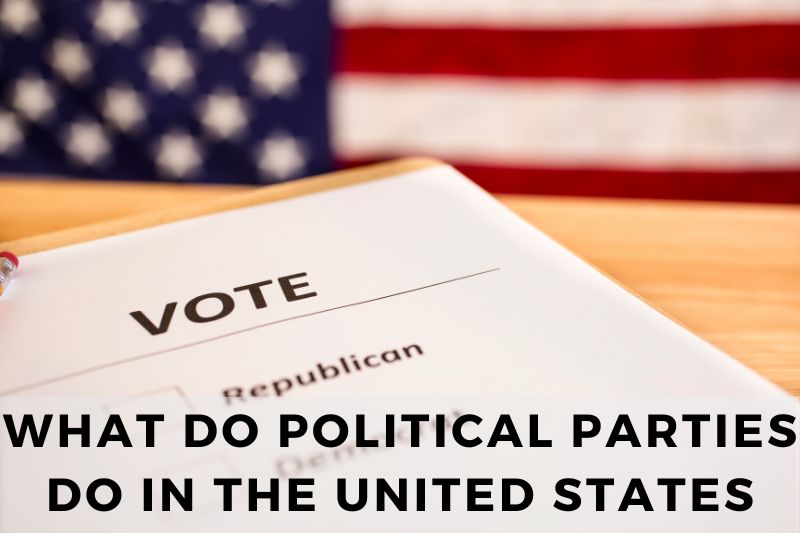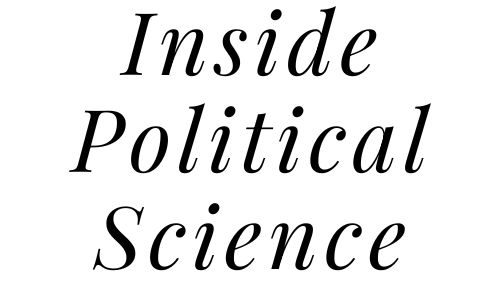
Political parties in the United States play a pivotal role in shaping the nation’s governance and political landscape. They serve as the primary vehicles through which citizens engage in the democratic process. If you wish to understand how American politics work, you need to understand how the manor political parties work.
From nominating candidates to shaping policy and mobilizing voters, the two dominant political parties – The Republican Party and the Democratic Party – exert significant influence at every level of government. In this article, we will review the various roles and functions of the main political parties in the United States, shedding light on their significance and impact on the nation’s political framework.
What Do Political Parties Do in the United States?
While discussing what political parties do in the United States we’ll focus on the two main parties – the Republican Party and the Democratic Party. However, please note that our analysis below is based on how things worked under normal conditions for decades before the recent changes in the operations of the Republican Party under Donald Trump.
So, here is what political parties normally do in the United States:
#1. Nominate Candidates
Political parties in the United States play a crucial role in the candidate selection process for various elective offices. The Democratic and Republican parties employ different methods for nominating candidates.
Democrats typically use a combination of primaries and caucuses, allowing registered party members and unaffiliated voters to participate in candidate selection.
Republicans, on the other hand, often rely more heavily on closed primaries, restricting participation to registered party members only. Additionally, both parties hold national conventions to formally nominate their presidential candidates, where party delegates vote to select the nominee.
#2. Shape Policy
One of the primary functions of political parties is to shape public policy by advocating for legislative initiatives and promoting specific agendas. The Democratic and Republican parties have distinct policy positions on key issues.
For example, Democrats generally support policies aimed at expanding access to healthcare, increasing government intervention in the economy, and implementing progressive taxation. Republicans, on the other hand, tend to advocate for limited government intervention, lower taxes, and deregulation. These ideological differences are reflected in the parties’ platforms and legislative priorities.
#3. Mobilize Voters
Political parties actively engage in voter mobilization efforts to increase turnout and support for their candidates during elections. Both the Democratic and Republican parties utilize a variety of strategies to mobilize voters, including door-to-door canvassing, phone banking, and digital outreach.
However, they may prioritize different demographic groups based on their electoral coalitions. For example, Democrats often focus on mobilizing minority voters, young people, and urban residents, while Republicans target rural voters, older adults, and conservative-leaning demographics.
#4. Provide Political Education
Parties serve as vehicles for political education, informing citizens about political issues, candidates, and the electoral process. The Democratic and Republican parties conduct outreach programs and produce educational materials to engage voters.
However, they may emphasize different policy priorities and messaging strategies. Democrats may prioritize issues such as climate change, social justice, and income inequality, while Republicans may focus on national security, traditional values, and economic growth. These differing emphases shape the parties’ educational initiatives and voter outreach efforts.
#5. Facilitate Governance
In addition to their roles in elections, political parties facilitate governance by organizing legislative bodies and coordinating the activities of elected officials. Both the Democratic and Republican parties play key roles in Congress and state legislatures, where they establish leadership structures and influence policy outcomes.
However, they may approach governance differently based on their ideological priorities and partisan objectives. For example, Democrats may prioritize passing legislation on healthcare reform or environmental protection, while Republicans may focus on tax cuts and regulatory reform. Despite these differences, both parties seek to govern effectively and advance their policy agendas through legislative action.
#6. Articulate Ideologies
Political parties in the United States serve as vehicles for articulating and promoting specific ideologies and policy agendas. The Democratic Party is often associated with liberal and progressive ideologies, advocating for policies such as healthcare reform, environmental protection, and social justice.
In contrast, the Republican Party is typically aligned with conservative principles, emphasizing limited government, free-market economics, and traditional values. These ideologies shape the parties’ platforms, messaging, and policy priorities, providing voters with clear distinctions between their political choices.
#7. Organize Political Activities
Political parties are responsible for organizing a wide range of political activities, including fundraising, campaign events, advertising, and grassroots organizing. Both the Democratic and Republican parties maintain extensive networks of volunteers, activists, and donors to support their political objectives.
These activities are coordinated through party committees at the national, state, and local levels, which work to mobilize resources and coordinate strategic efforts. From organizing rallies and debates to managing voter outreach programs, parties play a central role in shaping the political landscape and driving electoral outcomes.
#8. Develop Party Platforms
Party platforms serve as blueprints for the policy priorities and objectives of political parties. The Democratic and Republican parties develop platforms through a collaborative process involving party officials, elected representatives, and grassroots activists.
These platforms outline the parties’ positions on a wide range of issues, including healthcare, education, immigration, and national security. While party platforms are not binding on individual candidates, they provide a framework for party unity and serve as a basis for voters to evaluate candidates’ positions and priorities.
#9. Engage in Electoral Competition
Political parties engage in electoral competition to win elections and gain political power. The Democratic and Republican parties compete for control of elected offices at the local, state, and national levels.
This competition takes place through campaigns, debates, and voter outreach efforts aimed at persuading voters to support party candidates. Electoral competition drives parties to mobilize resources, develop persuasive messaging, and adapt to changing political dynamics in order to secure electoral victories and advance their policy agendas.
#10. Hold Elected Officials Accountable
Political parties play a crucial role in holding elected officials accountable for their actions and decisions. Party discipline and cohesion are essential mechanisms for ensuring that elected representatives uphold party values and priorities.
The Democratic and Republican parties employ various methods to hold their members accountable, including party endorsements, fundraising support, and primary challenges. By monitoring and evaluating the performance of elected officials, parties reinforce accountability and maintain cohesion within their ranks, ensuring that elected representatives remain responsive to party objectives and the interests of their constituents.
#11. Foster Political Debate
Political parties foster political debate by promoting dialogue and engagement on key issues facing society. Through party platforms, campaign messaging, and public forums, parties encourage discussion and debate among citizens, elected officials, and policymakers.
While parties may advocate for specific policy positions, they also facilitate broader discussions about the direction of government and the allocation of resources. By fostering political debate, parties contribute to a vibrant democratic process and encourage informed decision-making among voters.
#12. Contribute to Political Stability
Political parties play a vital role in maintaining political stability by providing continuity and structure to the democratic process. In this regard they support and promote democracy. Through their organizational infrastructure and institutional presence, parties help stabilize the political system by facilitating the peaceful transfer of power and ensuring continuity in governance.
By offering voters clear choices and alternatives, parties mitigate social and political tensions and promote orderly transitions of leadership. Additionally, parties serve as channels for resolving conflicts and negotiating compromises, contributing to the overall stability and functioning of the political system.
Closing Thoughts
In conclusion, political parties in the United States are dynamic and influential entities that shape the nation’s political landscape in various ways. From nominating candidates and shaping policy to mobilizing voters and fostering political debate, parties play a central role in the functioning of democracy.
The Democratic and Republican parties, with their distinct ideologies and strategies, compete in electoral contests and drive the policy making process. As integral components of the political system, parties contribute to political stability and ensure accountability while engaging citizens in the democratic process.
Understanding the roles and functions of political parties is essential for navigating the complexities of American politics.
